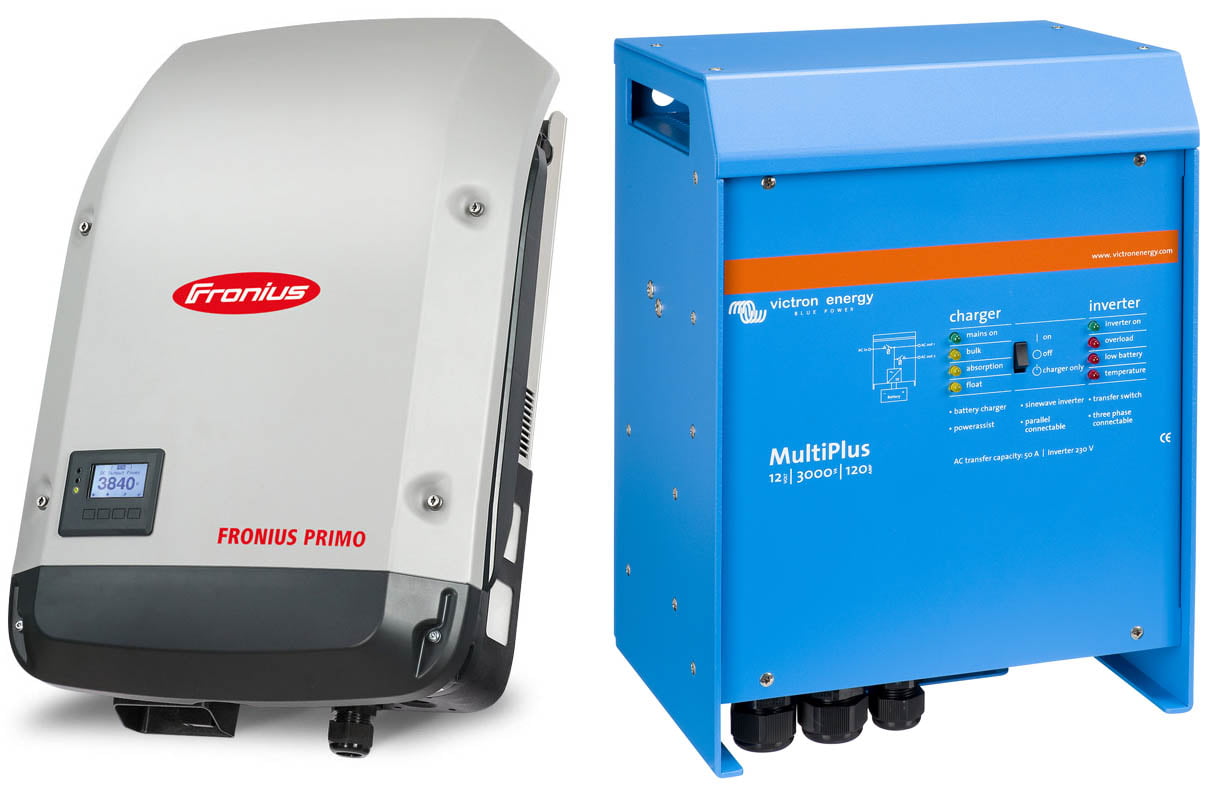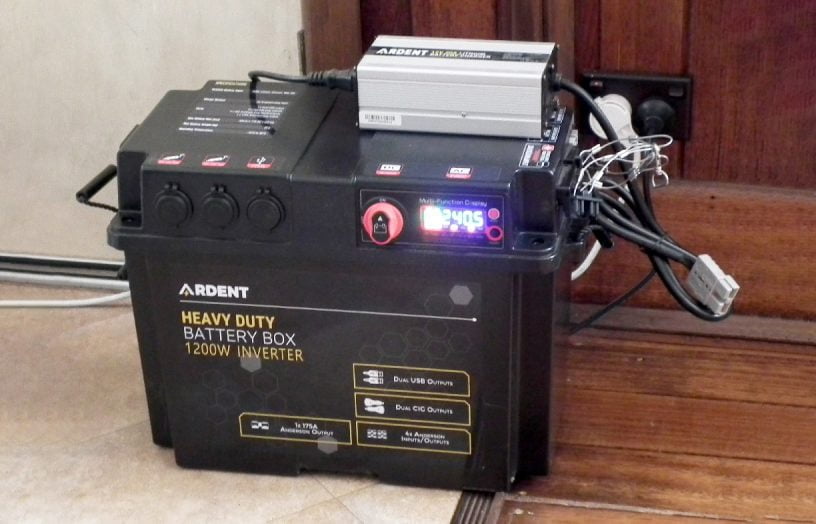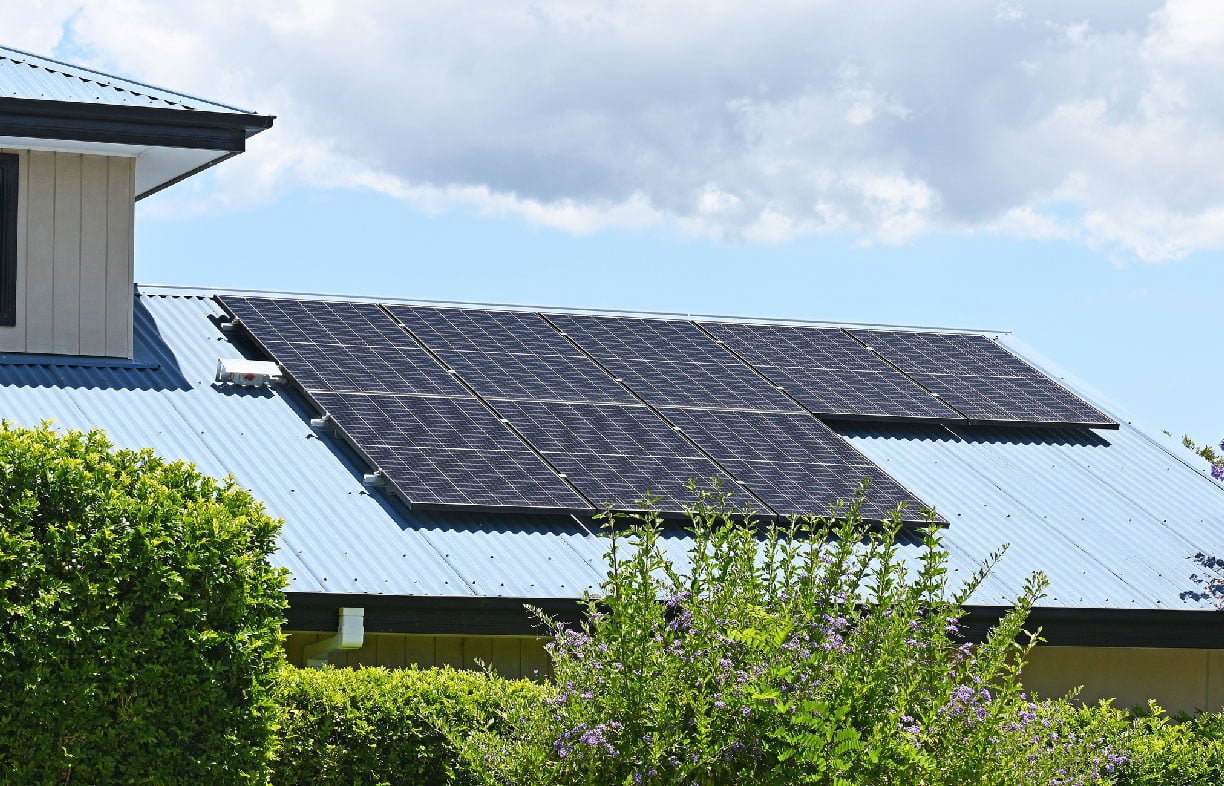Mains power anywhere: An inverter buyers guide

Whether you live off-grid or have a grid-connected generation system, the right inverter can make all the difference. We check out what’s available, where to get them and which one is right for you.
This article was first published in Renew 137 (October – December 2016).
Choosing an inverter may not be the first thing that comes to mind when you’re thinking about installing a solar or solar + battery system. But every one of the 1.5 million solar systems already installed in Australia includes an inverter and, in fact, it can be thought of as the ‘heart’ of the system—if it’s not working, your solar generation is wasted or, if you’re off-grid, you’ll be without power (or at least without mains-equivalent 240 volt power*).
But what is an inverter and why is it so important? In a nutshell, an inverter takes electricity from a power source that produces DC electricity, such as solar panels or a battery bank, and converts it into mains-equivalent power (240 volt AC), ready to be used in your house.
It is important to have a good inverter. In off-grid systems, if your home relies solely on 240 volt power from a stand-alone inverter and the inverter fails, you will have no power, even though it is still being generated and stored. In grid-connected systems, an inverter failure means your solar panels are doing nothing until the inverter is repaired or replaced.
Which inverter for your needs?
The majority of currently installed grid-connected solar systems will be using a grid-interactive inverter. A grid-interactive inverter converts the energy from solar panels into mains power and feeds it into the house’s electrical wiring—no storage is involved. As indicated by the name grid-interactive, these inverters can export energy into the grid, and require a grid connection (or an equivalent 240 volt AC supply) to operate; they can’t operate in a stand-alone capacity.
When you bring energy storage into the equation it gets a little more complex, as the inverter needs to deal with both a generation source (like solar panels) and batteries; and possibly also the grid.
In off-grid systems, a stand-alone inverter can be used to convert the DC electricity from the battery bank into mains-equivalent power to run standard appliances. An inverter-charger is like a stand-alone inverter except that it has a mains voltage level input, which can be used to charge the batteries from the mains or a generator—it is not, however, grid-interactive, so can’t export energy to the grid.
The most complex inverter type is the hybrid inverter, which can feed energy into the grid from either the solar array or the battery bank. Many hybrid inverters can also power the house from the batteries during a power failure, in effect becoming a large UPS (uninterruptible power supply). They can also charge the batteries from the grid.
This makes many hybrid inverters true bi-directional devices, and many, if not most, can handle all of the energy flows in a home energy system. Some can even divert the excess solar energy to a particular load, such as a water heater, replacing the need for a separate device, known as a solar diverter (the SunMate is one example), for this purpose.
Let’s now look at the features of each type of inverter in a bit more detail.
Grid-interactive inverters
Grid-interactive inverters are connected to both the power source (usually a solar array but sometimes a wind or hydro turbine) and the mains power grid. Energy generated by the power source is converted to AC mains power of the correct voltage and frequency and this supplements the power drawn from the grid by the home’s appliances. At times there will be more energy generated than being used and the excess is fed into the mains grid. At these times you will accumulate export credits, although how much you get paid for those depends on your feed-in tariff.
Grid-interactive inverters vary enormously in size, from 10 kW or larger units for big domestic and small commercial systems, down to tiny 200 watt models. Some, known as microinverters, are even designed to be mounted on the back of a solar panel to make the panel itself a grid-interactive module. These are ideal for those who want to start small and increase their system over time, or for systems where the array may be partially shaded—in a solar system using microinverters, each panel is independent of the others and not affected if other panels are shaded.
For the full tables from this guide in PDF format, click here
Read the full article, which covers all inverter types (including hybrid, off-grid, grid-interactive, and DC-DC converters), sizing your inverter, specifications, safety, and inverter connectivity, in Renew 137.
This article was first published in Renew 142 (January – March 2018). Renew 142 has a focus on sustainability for landlords and renters.
Recent articles
 DIY
DIY
Deleting the genset
If you have the need for the occasional use of a generator, then why not replace it with a much cleaner battery backup system instead? Lance Turner explains how.
Read more Renewable grid
Renewable grid
Is a floating solar boom about to begin?
Rob McCann investigates the world of floating solar energy systems.
Read more All-electric
All-electric
Direct PV solar hot water buyers guide
Solar hot water can dramatically reduce your water heating costs, but what if your house isn’t suitable for a conventional solar water heater? There is an alternative that can be used almost anywhere you have solar access, as Lance Turner explains.
Read more
